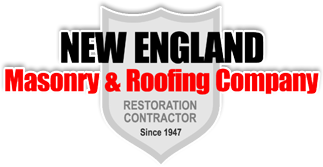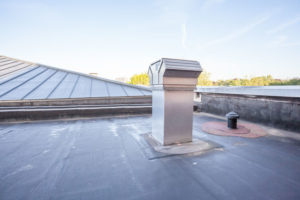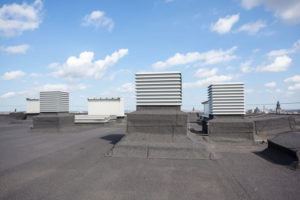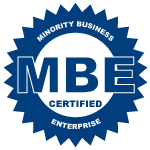Category: Commercial
Tips for Talking with Your Roofer about a Commercial Roofing Plan
Whether you are planning to have a new roof on your new commercial building or you want repair or replacement for your existing roofing, you need to discuss every detail of the process with your roofer – here are some tips for efficient communication with your roofer:
- Take your time to figure out your questions – think about the roofing process and note every aspect that needs clarification. Include costs, project phases and project duration, warranties and the amount of disruption caused by the work;
- Ask your roofer to explain to you each project phase – that way you can find out exactly what you should prepare for and it gives you the opportunity to test your roofer’s knowledge and helpfulness;
- Find out about crews and subcontractors – you need to know exactly who will work on your roofing project, so make sure to find out how many of the roofer’s own employees will work on your site, whether your roofer outsources processes to subcontractors and get warranties for the work performed by the roofer’s own crew as well as for the done by the subcontractor’s team;
- Ask about references – ask the roofer if he is willing to provide the contact details of any of his previous customers that you can talk to about the services provided by your roofer. Most commercial roofing CT contractors will provide the references if they have done well for their previous clients.
Checklist For Commercial Building Maintenance Professionals
Facility Management is an interdisciplinary field dedicated to the maintenance of commercial buildings such as malls, offices and business parks, logistic parks, hotels, resorts, schools, sports arenas, congress centers etc. Common tasks include maintenance of air conditioning systems, electrical and lighting systems- all of which being part of the technical maintenance; cleaning, disinfection and pest control, space management, landscaping and security are also a part of this field. Technical aspects of these services are usually supervised by the Building Management System.
Facility Management technique involves anticipating and solving problems through regular maintenance, before they degenerate. Being proactive instead of passive or reactionary is the most important thing for efficient operations in any building. This ability differentiates the professional performances from mediocrity.
Commercial building restoration maintenance professionals offer their clients a comprehensive set of solutions aiming at increasing efficiency, optimizing processes and, not least, reducing costs. The maintenance of the installations and equipment is typically done on the basis of an annual maintenance program including emergency corrective interventions, in the event of damage.
The most common objects of the maintenance operations:
- Electrical installations
- Plumbing
- Fire extinguishing installations
- HVAC systems
- Construction (paints, ceramic tiles, thermal insulation and waterproofing etc.)
Other services included on the checklist of commercial building maintenance professionals:
- Daily and monthly reports to beneficiaries
- Reading utility meters
- Technical audit of the buildings
- Solutions to reduce costs
- Permanent technical assistance
What is Ponding Water and How Will It Affect Your Flat Roof?
Water is essential for life and there would be no construction without it, but when building components are constantly exposed to the element, they get damaged quicker that you can imagine. The Commercial roofing CT area are designed and built to protect buildings against the elements, including water in any form, but they can fulfil their role only if they are allowed sufficient time to dry, that’s why any accumulation of water on the roof surface is extremely harmful for the roof.
Ponding water – the term used for small pools of water that appear because the roof has lost its flatness – can be caused by many different roof faults:
- A fault of the drainage system – clogged gutters and downspouts prevent proper water elimination and cause water ponding;
- Incorrect pitching – even flat roofs need to have a little slope to allow water to roll down;
- Too much material on the roof edges – another issue that prevents proper drainage.
The effects of prolonged water pooling are a general weakening of the roof that manifests in the form of the increased frequency of leaks, roof sagging, the appearance of moss, algae, mold and mildew on the roof, in the attic and in the building. When noticed in time, water ponding can be corrected, but water is a powerful enemy that can destroy the entire roof if the problem is addressed in a timely manner.
Components of a Commercial Roofing System
Most flat or low-sloping commercial roofs consist of three principle components: one or more weatherproofing layers on the top to prevent water from penetrating the deeper layers of the roof and usually fitted with an extra layer of surfacing to protect those deeper layers from the sun and the wind and a reinforcement layer to add strength and stability. Depending on the type of the commercial roof, the components are made from different material:
- Built-up roofs – this type of roofing consists of alternated layers of sheets made from tar or other suitable material and gravel or liquid surfacing;
- Modified bitumen roofs – these roofs use sheets of modified bitumen adhered with a roofing torch. Modified bitumen is more resistant and more durable than conventional bitumen;
- Foam roofing – these roofs consist of a decking on which a suitably thick layer of polyurethane foam is applied from a large spraying gun and then granules and various top coatings are added for weatherproofing and enhanced protection against impact, UV radiation, wind and water;
- EPDM roofs – also known as rubber roofs, these systems use sheets made from special sheets of rubber material fastened together with seam tape and fixed with a bonding adhesive to the deck.
Seek out the commercial roofing CT contractors who offer the types of solutions for your commercial building.
Spring Commercial Roof Maintenance
The cold season is a challenge for every roof, which is why the beginning of spring is the ideal time for scheduling maintenance. On this occasion, the entire surface of the roof must be checked thoroughly, and potential problems that occurred during the cold months have to be fixed.
Who must do the maintenance of a commercial roof?
Roof inspections performed by commercial roofing Connecticut specialists trained and experienced in flat roofing. They have adequate equipment to detect problems, they provide professional advice as well as long term maintenance plans.
Special equipment such as infrared scanners must be operated by personnel certified in thermography. Roof repairs must be carried out by specialist builders certified by manufacturers.
What is included in the spring commercial roof maintenance?
- Cleaning the roof and its drainage elements from debris, soil, vegetation etc.
- Inspecting the roof`s membrane for early detection of possible problems (visual inspection along with infrared scanning provides a clear picture and precise diagnosis of the entire roof system)
- Correct and rapid repairs of the roof, performed by roofers specialized in flat roofs and certified my manufacturers
As a precautionary method, it is recommended that you periodically resume the maintenance program and limit the traffic on the roof to authorized personnel only. The waterproofing efficiency of a flat roof should be impeccable, because water infiltration can cause great damage.






















